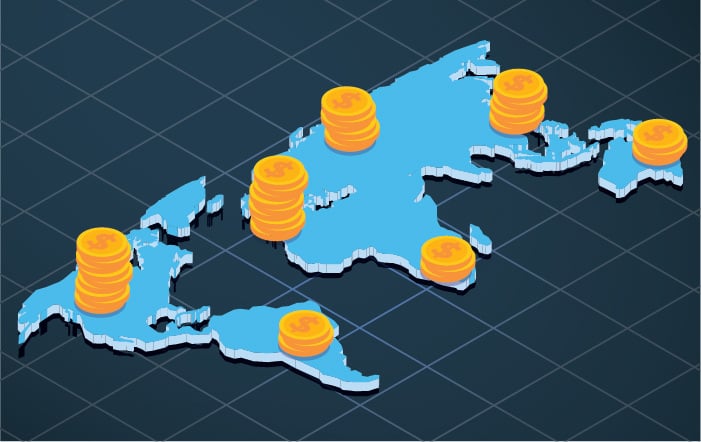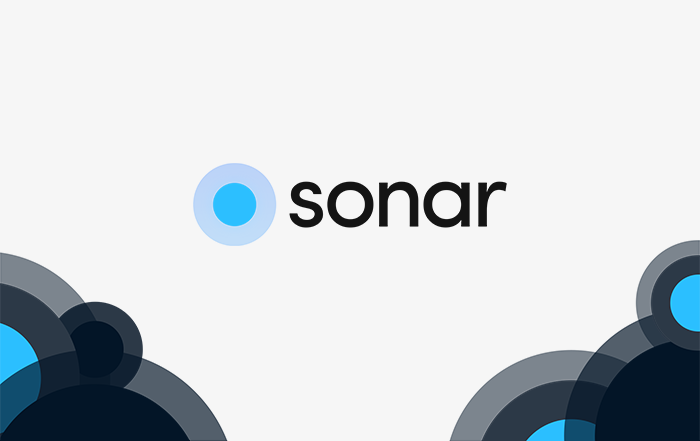4 min read
Network Monetization & Market Expansion
Whether you’re a large or small Internet Service Provider, your company’s underlying goal is to grow. While expanding into new markets can be...
10 min read
.png) Sonar
:
Mar 9, 2022
Sonar
:
Mar 9, 2022

Let’s go over a scenario that may sound familiar: Accounting software open on one window, calendar on another with reminders frequently going off so you don’t forget to make changes on customer accounts, highlighted sticky notes on your desk to make sure there aren’t any notes you’re forgetting, and lastly folders upon folders of documents stored on various drives in your system.
If this sounds familiar, it may be because this is how some organizations are still managing their operations – with a lot of manual work, and a lot of effort. With Sonar, we’ve designed our tool to take stress and complication out of the complicated business of managing billing and services for your clients using automated billing, scalable interfaces and management platforms, and enhanced simplicity through integration with 3rd party systems. In this document, we’ll be jumping in and reviewing how Sonar’s functionality and flexibility can be applied to your Multi-Dwelling Unit (MDU) management business. If you’re wondering whether this use case applies to you, or aren’t sure if you qualify as an Multi-Dwelling Unit (MDU), ask if your business meets any of the following:
Then the use case and features described below apply to you and serve as further information as to why Sonar is the One-Stop Software designed with your business in mind. We’ll be expanding on a few concepts covered on our home page like account management and service management, while also introducing new concepts in the form of provisioning and networking within Sonar and how it can be used to make your workflow more manageable.
Mentioned previously, Sonar is a tool in your repertoire designed to enhance your experience. To review information, you may already know that Sonar is capable of automated billing, which is to say that based on parameters you set within the Sonar interface, your accounts will automatically be billed, invoiced, and payment made without any human interaction. As part of the simplification idea, along with automated billing we provide you with the tools to create a highly customizable Customer Portal, allowing your clients to log-in, see their current balance and their account status, and make payments themselves should they opt-out of automatic billing. However, the following features will appeal to you just as much as automated billing:
Address Pre-Qualification & Tenant Management
In other applications, generating new accounts requires entering a new address along with the account holder’s information. In Sonar, address information can be entered without immediately being associated to the account. This can be done in one of two ways and will accelerate the tenant onboarding process.
Once the addresses are entered, account creation becomes as simple as adding the current tenant’s name to the account as the primary contact and proceeding to add services and inventory. By using the pre-qualified addresses feature, any tenant changes will be only a minor inconvenience due to the re-setup process being shortened significantly by the addressing existing within the instance already.
Additionally, handling a tenant moving out is quite easy within the interface as well. Once a tenant provides notice that they’ll be moving out, a scheduled event can be created to disconnect the services and change the account status to inactive (or a custom inactive status configured within the instance) and proceeding with activation of the new tenant using the same pre-qualified serviceable address within the instance.
Furthermore, as every building, condo, or housing group may operate differently, we offer methods of customizing who receives he invoice. During account setup, you’ll be prompted to select the financial contact. Should the tenant not be the person responsible for paying the invoice, or if the invoice is included as part of the rent, then the financial contact option would simply not be selected for the primary contact (the tenant), and would instead go to the designated inbox for the financial (secondary) contact. Part of this also allows for flexibility in shared housing situations, where any number of contacts can receive all notifications associated with an account, including scheduled job, service changes, outages or maintenance, and financial notifications.
Record Keeping & Details
Sonar is much more than an account and billing tool and once it’s fully configured allows you to communicate with the tenant(s) entirely within Sonar. All email communication is automatically recorded on the account through tickets, and any calls to or from the tenant(s) can be added by using the call log function on the account directly. In addition to communication, notes and special information can be added to the dashboard for the account and pinned depending on importance. A few examples of how you might use this function would be access restrictions to the unit, notes on any pets or even information on accessing Customer Premises Equipment remotely.
Along the same vein as Scheduled Events above, the triggered email functionality is an automated system requiring only a small amount of initial setup. The triggered email functionality uses a pre-packaged number of variables allowing you to create personalized notifications that are automatically sent to customers in the case of usage limits, maintenance notices, and bill reminders.
In the previous segment, we touched on some more precise features that would benefit your Multi-Dwelling Unit (MDU) management process, introducing simplifications to a workflow that otherwise may not even interact within the same software. We bring these same simplifications to service management. Scheduled events were mentioned as a means of tenant management however they can also be useful for managing services as well. Before proceeding with discussing the in-depth service features, let’s talk about how the account management features in the last section also come in to play for the services.
Scheduled events can be used for more than scheduling account deactivation or contact switch. They can also be used to schedule service changes, schedule price increases, and schedule equipment changes on the account.
Pricing, Appearance, and customization
Part of managing services in the most obvious manner is managing the pricing for your services and for your tenants. Sonar gives the freedom to make changes to your services, packages, and invoice settings. With services within Sonar, you can create any number of services you need, packages which combine services, and adjustments. With this flexibility you can greatly control the exact appearance of what your tenant sees on their invoice. Services being set up can be configured as a Data service (used for internet services or standalone IPTV services), Voice services (used for VOIP or residential phone services), or as a general service (IPTV channels or extra usage packages).
Additionally, a few other service types can be added in order to accommodate the various necessities that will come up as a property owner/caretaker. Non-data services can be added such as recurring rent payments, fees for maintenance or service calls, and the ability to add one-time transactions for any existing services. All services added to the account appear as line items on the monthly invoice, displaying information on what services are being charged. Additionally, services can have their prices overridden on a per-service basis, meaning custom pricing is as easy as clicking a button and setting the price for that line item.
Finally, as part of managing the services and billing, do note if you enable Usage Based Billing that usage does display on the invoice, with the separation between free and billable usage clearly displayed.
As important as it is to be able to set-up an account and manage billing, the other side of the equation that needs to be considered is service delivery. A reasonable expectation for any paid for service, especially a data service, is reliability. While Sonar can’t guarantee the reliability of your Service Provider backbone, we do make it easy to configure failover services as well as track the service reliability, uptime, and service usage of your clients and tenants. In essence, Sonar’s Network functionality is designed to fit seamlessly into your existing setup – or if you’re just getting started, can be a great baseline for setting up a networking environment – so let’s go over a few of the key features that should hopefully make Sonar a staple in your tool-belt.
Client Provisioning & Connection
Provisioning clients in Sonar is easy, combining a smooth interface with the robust backend of network servers such as a Mikrotik router or Juniper switch. By combining the IP Address Management interface with the subnet management interface (as well as giving you a quick way to check the status of any inline devices and DHCP or RADIUS servers), Sonar can help you incorporate a number of Client provisioning services without feeling the need to rip out your hair.
In terms of getting Clients set up within your instance, the networking side of Sonar seamlessly incorporates DHCP, RADIUS or PPPoE for getting your clients set up in your network, with server information entered as part of the networking setup, and credentials stored directly on the account.
Tracking & Usage
After the client connection occurs, we enter the next stage of how Sonar simplifies and automates the client experience. Depending on your network configuration, the usage data may be reported by your provisioning server – if it’s not though don’t worry, because you can still configure an inline device and have our Netflow service capture and transmit the amount of data being used by your clients for display on their account. In addition to data usage tracking, and the associated Usage Based Billing identifying free vs billable usage, the networking functionality introduces live network monitoring using what we call a Poller. Available on our GitHub, the poller allows you to deploy a passive network scanner that will communicate with devices on whichever subnet(s) you choose to have it monitor and report the status of the devices connected on that subnet, once again stored historically. The other benefit of the poller is the introduction of monitoring stats, a feature which allows you to see the ICMP Packet statistics, SNMP statistics, network statistics, and breakdowns the overall connection quality. The information related within the monitoring statistics comes directly from the equipment based on information provided when configuring the customizable monitoring templates – configured through providing the SNMP OIDs for information you wish to graph, track, or be notified of as it approaches the thresholds you set.
Connection control & Billing interaction
One advantage yet to be mentioned for providing Sonar with the means to monitor and adjust the connectivity of your clients is best seen in the interaction between the network services and the automatic billing. If your client becomes delinquent on their invoice, Sonar can automatically transition these customers to a delinquent state. Through communication with the provisioning server, the Sonar instance can arrange for these delinquent clients to have their connections dropped (or slowed to the point of near uselessness) or redirected in the case of non-http traffic. A good note is that this process can trigger on any invoices, and not just service-related invoices. For example, a maintenance fee charged and invoiced might be due by the end of the month, and if unpaid will also result in the same delinquency process triggering.
In this section, we’ll be going over a few key features that separate Sonar’s scalable and flexible inventory system from the more manual inventory methods, and how these features serve to enhance your pipeline and make organization of all your equipment easier, not just networking gear. In general, the ability the track networking equipment, general items, and bulk items provides functionality that previously would have required some measure of manual entry, whether it be spreadsheet or purpose built software, however by integrating the inventory system with the account system in Sonar, the process flows more smoothly, and minimizes manual interaction.
Generic item tracking
We’ll start with discussing how you can track the various odds and ends that accrue in the course of managing property. You may be coming into Sonar with an inventory system that already works well for you – maybe you’re printing out container numbers and those containers sit on organized shelving. Even if you’re not, and you’re currently just placing things throughout in what can only be referred to as organized chaos, Sonar can be there to work with it. With our generic item tracking, we allow you to add, track, and store items that would ordinarily require manual tracking.
An example of where this may come in to play would be spare keys or blanks stored in a specific container. Sonar allows you to add a bulk number of blank keys, or specific spare keys as tracked items. Past that, you can add a custom inventory storage location detailing the location of that bucket and any identifiers for it and assign these bulk keys to that location.
Another example might be spare furniture or housing equipment. If you provide furnished units, and these items get damaged, it’s easy to know what you currently have available to replace and its condition if it’s tracked in inventory. In fact, any excess items, hardware, or equipment can be tracked in bulk and given its own unique storage location.
Tracking Network Equipment
We touched on the general inventory systems in place in the high-level overview, but let’s go into that in greater detail.
Adding network equipment can be done in a few different ways, given the flexibility offered to you by Sonar. Models and manufacturers can be configured via API or through the inventory interface and are fully customizable. Each individual model can be customized to require as many or as few fields as you feel necessary. Additionally, the inventory can be added either manually by hand or scanned in through their barcode. Additionally, devices can be tracked by multiple fields, such as MAC Address, Serial Number, and even IMSI all at the same time.
Tailoring our software to fit your needs is a large part of what makes Sonar an attractive value proposition. From the introductory pricing all the way to the scalable interface and customer portal, we try to build around your needs. Let’s bring our attention over to some of the general, widely applicable and widely customizable, features we have to offer.
API functionality and custom reporting is a huge boon, not only for being able to extract the information you need from our interface (without touching our interface) but for being able to automate the workflow – making modifications to accounts, managing payments, discounts, and services through our GraphQL API. In addition to being a standard API language, we provide documentation that will help you discover how the API works with Sonar. Custom Reporting is also built on the same GraphQL language as the API and the Sonar backend, which means all information is available from all sources, giving you full visibility of your data.
Flexible Scheduling Interface means you can build flexible jobs for all required services, including maintenance visits along with network troubleshooting. Each scheduled job can be associated to a ticket and create a notification system to advise the tenant of the appointment. This ensures that every appointment and entry requirement is documented historically. Furthermore, scheduled jobs can be set with a pre-determined list of tasks that would need to be completed before the job can be marked as successful. The scheduling interface also ties into mapping, as do the tickets, which would give you an idea of which units or locations are more prone to issues/more likely to create tickets.
With Tickets, you can keep track of all communication with your tenants and your clients in an organized location. Tickets allow your tenants to reach out to you through a variety of addresses which will all forward to a manageable list. From there, they can be assigned and classified into groups and categories to organize how you view the communication depending on the request received from the client. Ticket replies can also incorporate Canned Replies, which are configured in the account and combine pre-determined variables with a customizable text field. Additionally, these tickets can seamlessly be transformed into Jobs if the communication requires a direct visit.
And finally, let’s talk about receiving payment and managing fees. Sonar comes with the ability to integrate with several providers, making it easy for you to receive payment for not only the data services but for rent or maintenance fees across the board. Anything invoiced can be seen on the customer portal and paid for there through any of the supported payment providers. And about fees, late fees and printed invoice fees can be enabled on the instance and will apply to each account should an invoice be paid late, or should the customer want a printed invoice rather than an email.
By combining flexible creativity, automatic billing, scalable customer interactions, and network management, we’ve designed Sonar to make property and tenant management easier for Multi-Dwelling Units (MDU).
To sum up the features we offer for Multi-Dwelling Units (MDU) Sonar:

4 min read
Whether you’re a large or small Internet Service Provider, your company’s underlying goal is to grow. While expanding into new markets can be...

2 min read
For many, the concept of the internet seems straightforward: we can simply reach into our pockets and access a vast wealth of information within...

3 min read
Whether you’re a new Internet Service Provider or you’ve been serving customers for some time but want details about exactly what Sonar...